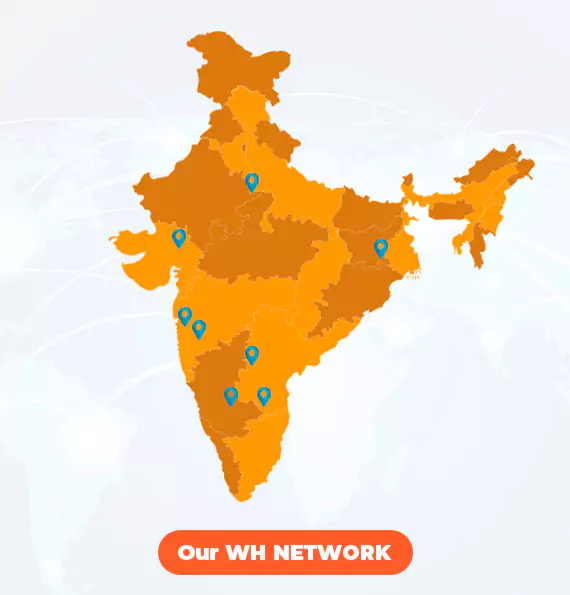Warehousing & Network
High Growth Consumption Clusters Customers Need
Warehousing facilities are a crucial component of our overall supply chain operations. Warehouses help us to store physical goods till they are shipped to the end-customer or to another location. The importance and requirement for our warehousing services has grown exponentially in recent times due to more and more businesses leveraging e-commerce to supply goods to customers as quickly and economically as possible.
Logistica India has a wide warehousing network consisting of distribution centers spanning across major metros and towns in many states. Logistica India’s current setups are at Delhi, Ambala (Haryana), Jaipur (Rajasthan), Dehradun (Uttaranchal), Kanpur / Lucknow (UP), Mumbai and Bhiwandi (Maharashtra) thus covering the key states of Delhi, Haryana, UP, Rajasthan and Maharashtra.
Warehousing operations are critical in that any inefficiencies could result in serious consequences to the entire supply chain such as delays or unavailability of the required goods. We overcome this challenge through the use of automation and process control.
Some essential processes implemented at our warehouses include :
Capacity Management :We plan carefully to optimize the space available for storage, taking into account current requirements and future inventory projections. We use technology to track the flow of goods during receipt and transport to ensure the current status is always available.
Inventory Management :When shipments are received, they are checked carefully, logged in the WMS (Warehouse Management System) and moved to the appropriate storage area. When shipments need to be transported, they are retrieved, packaged and loaded, along with an update to the WMS to indicate their transfer and that space is now available for new goods.
Temperature Management :For certain products which are sensitive to temperature, we ensure there are appropriate storage areas which fulfill specific requirements of temperature and pressure to prevent any spoilage or damage of goods
Transport Management :We carefully plan and select the best possible mode of transportation and the most efficient route for shipments leaving our warehouses. Goods are packaged carefully and loaded into the vehicles ensuring capacities are optimized. Shipment tracking is implemented so that real-time status updates can be communicated to customers, ensuring transparency in the process.
Process Automation :Many of the cumbersome checks and repetitive actions have been automated to improve efficiency. Some examples are implementation of an Inbound and Outbound Weight check system, Automated sortation system, etc.









